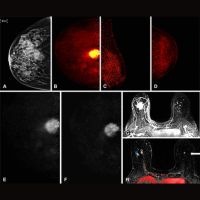Breast cancer remains a significant health concern globally, despite advancements in screening and treatment. Disparities in screening utilization, in stage at diagnosis and in survival rates persist, particularly among vulnerable populations. A recent study published in JAMA Network Open sheds light on the role of social determinants of health (SDOH) and unmet social needs in exacerbating these disparities, highlighting the importance of addressing these factors in healthcare settings, as women with unmet social needs were found to be 38% more likely to be diagnosed with late-stage cancer.
New prospective, survey-based cohort study of newly diagnosed patients with breast cancer
The study was conducted between 2020 and 2023 at an academic medical centre comprising a safety-net hospital and a National Cancer Institute–designated academic cancer centre, in a region with diverse socio-economic and ethnic demographics. Researchers evaluated data from patients with stages I-IV invasive ductal or lobular carcinoma, and investigated the impact of unmet social needs on screening mammography utilization and breast cancer stage at diagnosis.
Despite city-funded access to screening mammography, a substantial proportion of patients did not undergo regular screenings, with factors such as increasing age and unmet social needs significantly associated with lower utilization rates. Unmet social needs, including housing instability, food insecurity, and transportation challenges, emerged as crucial barriers to accessing preventive care. Patients facing multiple social needs were more likely to present with late-stage breast cancer, emphasizing the critical role of addressing these needs in improving early detection and survival outcomes.
Unmet social needs have a direct impact on access to cancer screenings
The study comprised of 505 patients, with 336 (67%) completing the Health Leads Social Needs Screening Toolkit and being included in the analysis. Among them, 201 patients (62%) self-identified as Hispanic, 63 (19%) as Black, and 63 (19%) as White. Overall, 255 (76%) of the participants underwent screening mammography. In the multivariable regression analysis, which factored in variables such as age at diagnosis, race, ethnicity, employment status, education level, history of screening mammography, insurance type, number of children in the household under 18 years, household size, number of unmet social needs, and recruitment site, several factors emerged as associated with not having undergone screening mammography. Factors included an increasing number of unmet social needs and advancing age at diagnosis. Notably, there was no significant association found between any specific unmet social need and the utilization of screening mammography. Individuals reporting two or more unmet social needs were more inclined to present with late-stage disease in comparison to early-stage disease. The study authors also noted that women with late-stage diagnosis supported more children under the age of 18 (mean of 3.08) in contrast to those with early-stage diagnosis (mean of 2.6), indicating that competing priorities, such as caregiving with less social support, may hinder the utilization of screening mammography, even when accessible. Globally, rising unmet social needs can burden patients, making it challenging for them to allocate time or resources for preventive health check-ups. Moreover, negative perceptions towards preventive care or distrust in the medical system can further deter individuals from utilizing screening mammography services. Notably, educational attainment did not seem to affect screening utilization, implying that factors like personal beliefs, apprehension, and mistrust in medical practices may exert a more significant influence than simply lacking knowledge.
Improving early cancer detection needs targeted efforts to meet social needs
The study's findings underscore the importance of considering the broader social context in cancer care delivery and integrating social needs screening into healthcare practices, specifically during patient intake. By identifying and addressing these needs early, healthcare providers can mitigate barriers to care and improve screening uptake among vulnerable populations. Additionally, targeted interventions tailored to specific social needs domains, such as childcare accessibility and utility needs, may further enhance early detection efforts. Moreover, the study highlights the need for broader healthcare policies aimed at reducing disparities in breast cancer outcomes. Access to screening mammography must be coupled with initiatives to address systemic barriers, including reducing healthcare costs, expanding insurance coverage, and increasing funding for community health centres.
Paving the way towards a multifaceted approach to cancer screening
While the study offers valuable insights, it also acknowledges limitations, including potential biases and the impact of external factors such as the COVID-19 pandemic. Nonetheless, its comprehensive approach to understanding the complex interplay between social determinants and breast cancer outcomes provides a roadmap for future research and interventions. Future analyses should evaluate which group of unmet social needs most correlates with not obtaining a mammogram to inform interventions. Addressing breast cancer disparities requires a multifaceted approach that encompasses both healthcare delivery and policy initiatives. By prioritizing social needs screening and implementing targeted interventions, healthcare systems can move closer to achieving equitable breast cancer outcomes for all populations, regardless of socio-economic status or ethnicity.
Source: JAMA
Image Credit: iStock



























